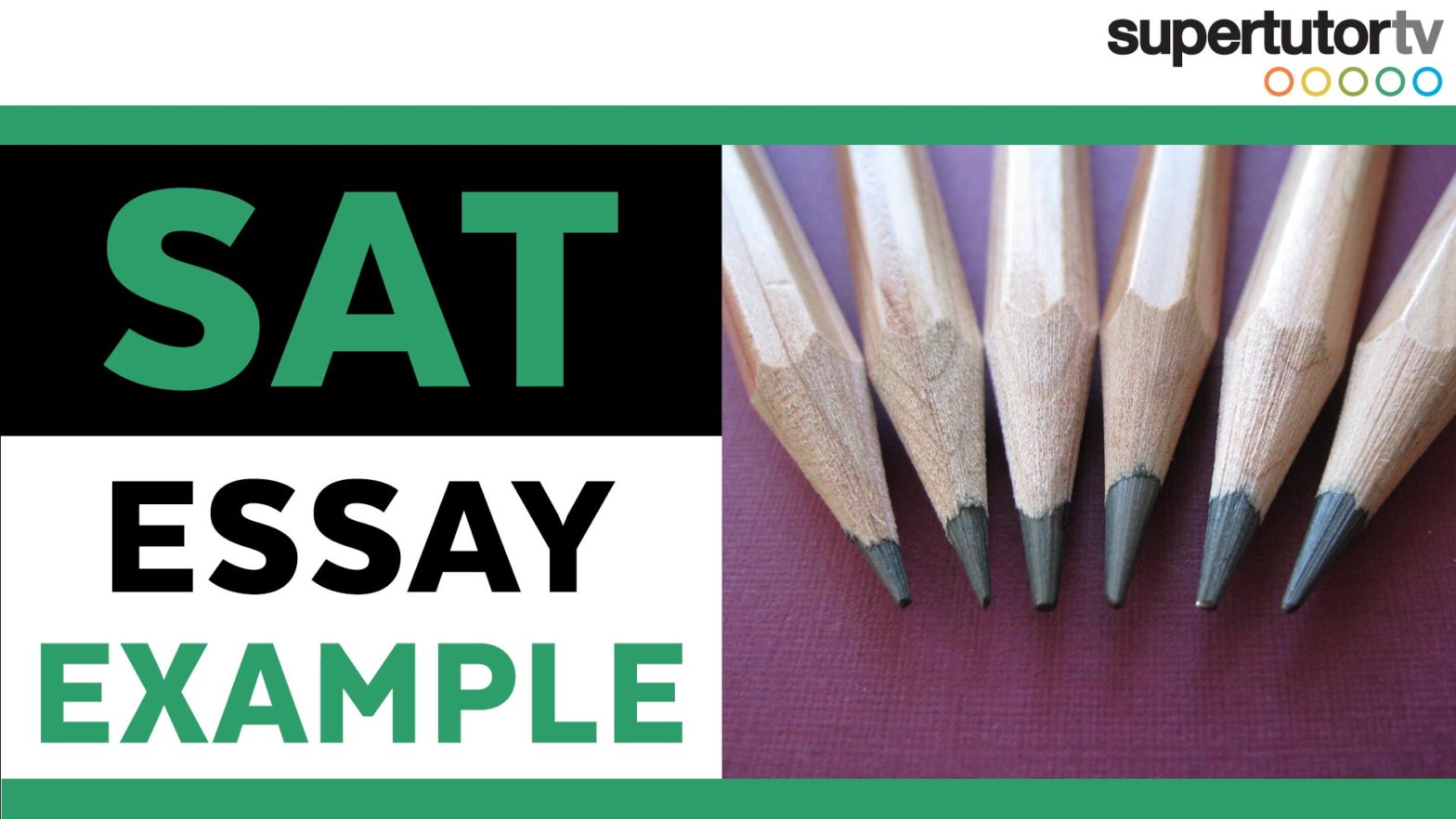Looking for an example of an awesome SAT® Essay? Further to our last post on the SAT® essay, below I’ve posted a full version of the essay I started in our video with 3 Tips to Improve Your SAT® Essay Score (I made a few adjustments– I hadn’t finished writing it when I posted the first two paragraphs 🙂 ).
The essay is based on Prompt #3 from the SAT® Official Guide, which you can download free here.
THE ESSAY
To persuasively make the point that technology benefits young people, In her article, The Digital Parent Trap, Eliana Dockterman asserts the importance of the topic using statistics, acknowledges her counter arguments while providing dim evidence of their validity, and supports her own side by synthesizing multiple sources of authoritative evidence.
In the beginning of her essay, the author first establishes the importance of discussing this pressing issue, utilizing numbers to clearly illustrate her point. For example, she cites statistics to establish the widespread use of technology among children: “27% of them use tablets, 43% use smartphones, and 52% use laptops.” She capitalizes on the power of data to reveal how broad reaching the issue of children’s technology use is. Moreover, she establishes that the decision to put technology in kids’ hands is not only one that matters on an individual scale, but one that effects public policy: Los Angeles County “will spend $30 million on classroom iPads this year, outfitting 640,000 kids by late 2014.” If schools are rolling out technology in droves, the question of whether doing so is to their benefit certainly warrants consideration. Furthermore, Dockterman uses numbers to also establish the lengths to which parents will go to stop the potential negative effects of digital device use: “Some (parents) are even paying as much as $24,000 to send their kids to monthlong ‘digital detox’ programs.” Using such striking statistics, Dockterman captures the audience’s attention: this is an issue that must be discussed. Furthermore, she builds a case that includes two sides with obviously passionate proponents: if both sides are fronting so much cash to protect their interests, a serious debate must be underway.
Next, Dockterman moves to explore her opposing arguments: what motivates parents and schools that choose to avoid technology when possible? By very simply presenting the thoughts of Lucy Wurtz, an administrator of a school that completely eliminates the use of digital products, Dockterman shows the other side’s proponents to have little concrete evidence or logical reasoning to back up their claims. Wurtz’s explanation is rife with incongruity. Her school’s policy “connects children to nature” but does not address why using a computer is so detrimental. The blindness insinuated by Wurtz’s comment “But I don’t see any benefit” further reminds people of the void of reasoning behind her argument. Dockterman allows this faulty argument to speak for itself, laying the groundwork for the audience’s acceptance of her well supported claims to follow.
Dockterman furthers her argument by then presenting multiple sources of evidence that more thoroughly support her own side: that technology exposure does benefit kids. Using appeals to authority, Dockterman borrows arguments from multiple respected researchers in the fields of communication and social sciences to build her own argument’s credibility. For example, she cites Mimi Ito, an anthropologist at the University of California at Irvine, who argues in favor of kids using social networking: “Online, kids can engage with specialized communities of interest” and are “no longer limited by what’s offered in school.” Ito further introduces the argument of interactivity, contending that “actively browsing pages on a computer or tablet is way more brain-stimulating” than just watching TV. Effectively Ito points to benefits technology offers, social engagement and active learning, that wouldn’t exist without these opportunities. Dockterman also cites education specialists, such as Shawn Jackson, principal of Spencer Tech, who encourages kids to use digital gadgets for a more practical reason: “If we’re not exposing our students to this stuff early, they’re going to be left behind.” Dockterman thus builds her point that without adoption of technology, our kids will be less social, less enriched and possibly left behind. Thus, citing authorities, the author renders her argument more credible and convincing.
To fully convince her readers, Dockterman first establishes the importance of this debate, and then allows an academic conversation to unfold. In the structure of the overall passage, the author utilizes a good amount of space for discussion of each viewpoint, including that of her opposition, allowing her point to seem more balanced and fair—even though she has clearly cited more reputable sources for her own point. Furthermore, she qualifies her own position, admitting its limitations and drawbacks. She admits, for example, “None of this means kids deserve unfettered access to the gadget of their choice.” Clearly, young people should not have screen access 24-7. Using these tropes of academic conversation, Dockterman keeps her argument convincing and reasonable, and reveals to readers how technology exposure is important to keep children competitive and engaged in our modern world.





